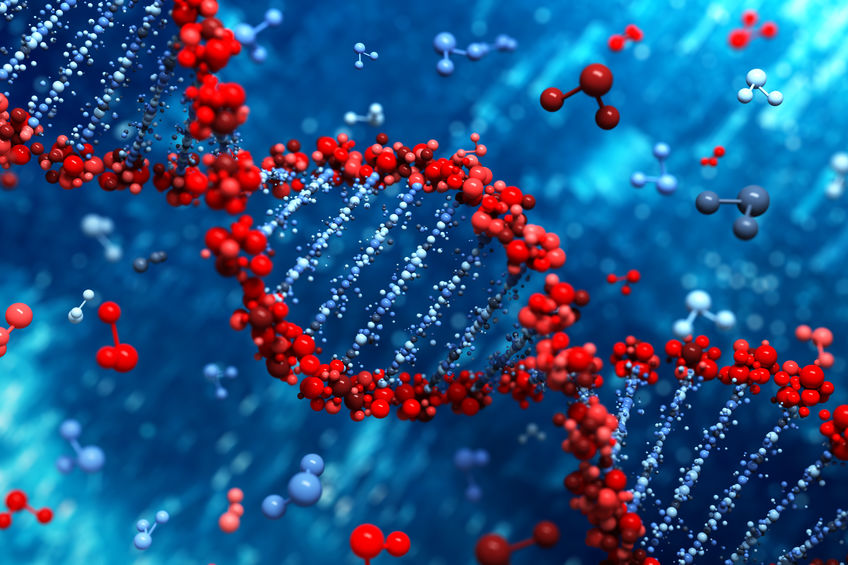By now most everyone has read the acronym CRISPR, the hottest thing in biotechnology, hailed as the path to many medical cures. But just about no one knows what the letters stand for. I will tell you but you will have forgotten by tomorrow or sooner. The full name is Clustered Regularly Interspersed Short Palindromic Repeats. It is a clumsy relatively non technical term created by a researcher at one of the three groups that hit upon the new technology simultaneously in Japan, Spain and the Netherlands in 1987. They all agreed to use it. Actually it is far less complicated than the microbiology jargon that tells the real story.
The key word that does have real meaning is palindromic. A “palindrome” is a series of letters that reads the same from beginning to end and end to beginning. The most famous one used to describe the term is”madam I’m adam”. I suppose one can say they appear regularly on a strand of DNA and the repeats are relatively short so it kind of works. However, because the term contains little scientific jargon almost no one can remember what the letters stand for. Maybe some of you could win a trivia bar bet if you can hang onto to the words long enough. I have been working as an educator in biotechnology for years and I can’t. I have to look it up before every lecture.
This most advanced gene editing tool was first discovered in bacteria. Some single celled microbes were able to fight off a virus by injecting a payload of their own DNA into the virus cell in a palindromic fashion. They first had to create RNA the messenger primed to recognize and dock to the virus DNA, neatly encasing in a pocket of CRISPR Associated enzyme which is usually a protein. Thus as often as not you will see CRISPR written as CRISPR CAS9, a favored protein. Okay now I have lost you so lets end the details and talk of the practicality of it all. Let’s face it, most of you drive a car but don’t understand how it works and appreciate atomic power and surely never understood nuclear fission.
All that is important to you is that, where we have understood the DNA of living things for a couple of decades we could rarely find the combinations of genetic letters A,C,G and T that made up the genes that determine all living traits. Your hair color and height and a plants ability to withstand drought are genetic traits. They simply do not have signposts on the helical strands we know as DNA. Now because of these clustered, regularly interspersed short palindromic repeats we find ourselves with a tool to map the DNA for most living things and then make alterations to them. We do not need to introduce any foreign genes as is the case of the much maligned but totally safe GMO technology which we call genetic modification.
One last stab at a simple recipe for the use of CRISPR technology is as follows: a researcher designs and orders a piece of RNA that locks on to whatever gene they are interested in, mixes it up with a CRISPR associated (Cas) enzyme, and they have cooked up their own customized precision gene-editing tool. Think: a GPS system in biology. (Note: RNA is ribonuceic acid, present in all living cells whose principle role is to act as a messenger carrying instructions from DNA for controlling the synthesis of protein).
Scientists hope CRISPR could one day be used to correct genes which lead to diseases in humans, and introduce genes which can protect from disease. For now, medical applications are confined to research labs, but as scientists remove potential problems and the debate over the ethics of human engineering is settled we are bound to see human applications.
In agriculture major applications and advances have already occurred. Chinese scientists have used the method to produce a wheat strain that is resistant to a fungal disease called powdery mildew. Dupont is ready too test a drought resistant corn and a high yield wheat developed using CRISPR technology.
The US Department of Agriculture has approved a new white mushroom that does not quickly brown because the gene that produces the enzyme that causes the browning was removed. It did not need to go through the GMO testing protocol as no new genetic material was introduced and was thus approved in a short time.
CRISPR – based gene editing has now been implemented across the scientific community for the past five years. While it is relatively easy to accomplish compared to previous work in the area it is experiencing rapid improvements annually. The World Health Organization (WHO) predicts that thousands of diseases will eventually be cured with it. While I am an optimist as to these predictions I remain aware that the genes that result in the Cystic Fibrosis lung disease have been known for many decades, a cure has yet to be achieved. Thus my optimism is cautious.
